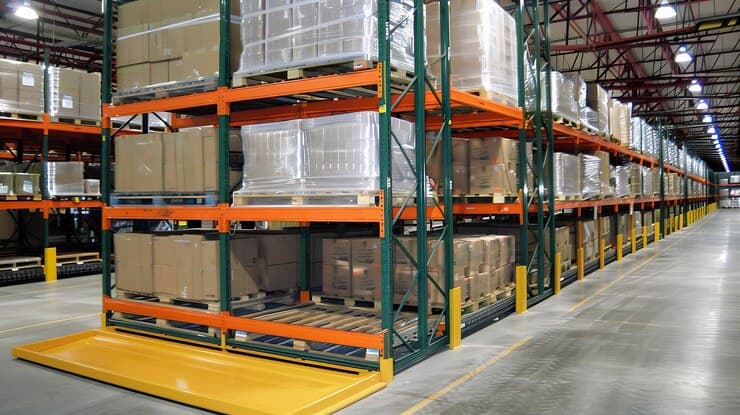Warehouse pallet racking system are integral components of modern storage solutions. They play a crucial role in maximizing storage efficiency, optimizing space utilization, and facilitating smooth operations within warehouses and distribution centers. In this article, we will delve into the intricacies of pallet racking systems, their types, benefits, and considerations, with a special focus on adapting these systems to accommodate the needs of the elderly.
The Basics of Pallet Racking Systems
Pallet racking systems are designed to store goods and products on pallets, which are typically used to facilitate the movement and handling of large quantities of items. These systems consist of a series of vertical frames and horizontal beams that create multiple levels of storage space. The primary goal of a pallet racking system is to maximize vertical storage space, thereby increasing the overall storage capacity of a warehouse.
Types of Pallet Racking Systems
- Selective Pallet Racking: This is one of the most common types of pallet racking systems. It allows for easy access to each pallet and is suitable for warehouses with a variety of products. Selective pallet racking systems can be configured to accommodate different sizes and types of pallets, providing flexibility in storage arrangements.
- Drive-In/Drive-Thru Racking: Drive-in and drive-thru racking systems are designed to maximize storage density. In a drive-in racking system, forklifts can drive into the racking structure to retrieve or store pallets. Drive-thru systems are similar but allow for entry and exit from both sides of the racking structure. These systems are ideal for warehouses with high turnover rates and limited aisle space.
- Push Back Racking: Push back racking systems use a series of nested carts that move on inclined tracks. When a new pallet is added, it pushes the previous pallets back. This system allows for high-density storage and is particularly useful in environments where space is at a premium.
- Cantilever Racking: Cantilever racking is designed for the storage of long and bulky items, such as pipes, lumber, or textiles. The racking system consists of horizontal arms that extend from vertical columns, allowing for easy access and visibility of stored items.
- Pallet Flow Racking: Pallet flow racking systems use gravity to move pallets from the back of the rack to the front. This system ensures a first-in, first-out (FIFO) inventory rotation, which is ideal for perishable goods or items with expiration dates.
Benefits of Pallet Racking Systems
- Increased Storage Efficiency: Pallet racking systems help maximize the use of available space by allowing for vertical storage. This increased storage density can significantly reduce the footprint of a warehouse, making it possible to store more products in the same area.
- Improved Inventory Management: With various racking configurations, it is easier to organize and access inventory. This improved organization leads to more accurate inventory tracking, faster order fulfillment, and reduced picking errors.
- Enhanced Safety: Modern pallet racking systems are designed with safety in mind. They include features such as reinforced frames, secure beam connections, and load limits to prevent accidents and ensure the safe storage of goods.
- Flexibility and Scalability: Pallet racking systems can be customized and adjusted to accommodate changing storage needs. This flexibility allows warehouses to adapt to evolving inventory requirements and operational demands.
Considerations for Elderly-Friendly Pallet Racking Systems
As warehouses and distribution centers evolve, it is important to consider the needs of all employees, including the elderly. Implementing a warehouse pallet racking system for elderly individuals requires special attention to accessibility, ergonomics, and safety. Here are some key considerations:
- Height and Reach: When designing a pallet racking system for elderly employees, it is essential to consider the height of the racking structure. Lower racking heights or adjustable shelving can make it easier for elderly individuals to access products without straining. Additionally, using ergonomic equipment, such as forklifts with adjustable cabs, can enhance accessibility.
- Ease of Operation: The racking system should be designed to minimize physical strain and effort. Features such as automated picking systems or electric pallet jacks can help reduce the physical demands on elderly workers, making it easier for them to perform their tasks efficiently.
- Safety Measures: Safety is a top priority when accommodating elderly employees. The racking system should include safety features such as anti-collapse barriers, clear labeling of aisles, and adequate lighting to prevent accidents. Training programs on safe handling techniques and proper use of equipment are also crucial.
- Workflow Optimization: Streamlining workflows and minimizing the need for repetitive or strenuous tasks can enhance productivity and comfort for elderly workers. Designing the warehouse layout to reduce travel distances and optimize picking routes can contribute to a more efficient and less physically demanding work environment.
- Ergonomic Equipment: Integrating ergonomic equipment into the pallet racking system can significantly improve the comfort and safety of elderly workers. Adjustable workstations, ergonomic lifting aids, and user-friendly controls can help mitigate physical strain and reduce the risk of injury.
Conclusion
Warehouse pallet racking systems are essential for efficient storage and organization within warehouses and distribution centers. Understanding the various types of racking systems and their benefits can help businesses make informed decisions about their storage solutions. When adapting these systems for elderly individuals, it is important to prioritize accessibility, safety, and ergonomics to create a supportive and inclusive work environment. By considering these factors, warehouses can ensure that their pallet racking systems meet the needs of all employees, contributing to a safer and more efficient operation.





Comments